Chronic pain isn’t just pain that won’t go away. It’s a disease that rewires your body, steals your sleep, and quietly erodes your ability to live. If you’ve been hurting for more than three months, you’re not just dealing with an injury that’s taking longer to heal-you’re living with a condition recognized by the World Health Organization as its own medical diagnosis since 2022. This isn’t a symptom. It’s the problem.
What Exactly Counts as Chronic Pain?
The International Association for the Study of Pain defines chronic pain simply: pain that lasts longer than three months. That’s it. No vague ‘if it feels bad,’ no ‘if your doctor says so.’ Three months. And it’s not just about how long it’s been. To qualify, the pain must also be disrupting your life-making it hard to sleep, work, socialize, or even get dressed. It’s not just physical. It’s emotional. It’s social.
There are four main types, each with different causes and treatments:
- Musculoskeletal pain (45.7% of cases)-think arthritis, back pain, fibromyalgia. This is the most common. It often responds well to physical therapy.
- Neuropathic pain (22.3%)-nerve damage from diabetes, shingles, or injury. Feels like burning, electric shocks, or pins and needles.
- Visceral pain (18.1%)-originates in organs. Often vague, deep, and hard to pinpoint. Common in IBS or endometriosis.
- Nociplastic pain (13.9%)-pain without clear tissue damage. Fibromyalgia is the big one here. Your nervous system is stuck on high alert.
Doctors now use specific checklists to diagnose these. For fibromyalgia, for example, pain must be widespread for at least three months and affect both sides of your body and above and below your waist. It’s not made up. It’s measurable.
How Chronic Pain Takes Over Your Daily Life
Most people don’t realize how deeply chronic pain reshapes your existence. It’s not just the ache. It’s everything that follows.
A 2022 survey of over 33,000 U.S. adults found people with chronic pain miss nearly 9.2 workdays a year. Those with severe pain? Over 16 days. That’s not just lost income. It’s lost identity. One Reddit user, u/TiredOfPain, shared: ‘I quit two jobs because I couldn’t stand for more than 20 minutes. Now I work remotely-but still miss 2-3 days a month when the flare hits.’
Sleep? Nearly 82% of chronic pain sufferers report disrupted sleep. Over 60% get fewer than five hours of quality rest each night. Poor sleep makes pain worse. Worse pain makes sleep harder. It’s a loop no one talks about enough.
Household chores? 78% say they struggle with them. Social events? 65% avoid them. Even personal care-bathing, dressing-becomes a battle for over half. One woman told the U.S. Pain Foundation: ‘I used to play with my kids. Now I lie on the couch while they play alone. I don’t tell them why. I don’t want them to feel guilty.’
And then there’s the isolation. 69% say they feel misunderstood by doctors. 52% have been called ‘drug-seeking’ in emergency rooms. That stigma delays treatment by an average of 7.3 months. You’re in pain. You go for help. Instead of answers, you get suspicion.

Why Painkillers Often Don’t Work-And Can Make Things Worse
Most people assume pain = pills. But for chronic pain, that’s rarely the answer.
NSAIDs like ibuprofen? They help about 45% of people, but only reduce pain by 20-30%. And for every 37 people who take them for six months, one will have a serious stomach bleed or heart issue.
Opioids? They’re not the solution. The CDC says they give only 10-15% more pain relief than non-opioid meds-but come with an 8-12% risk of addiction after just 90 days. That’s why guidelines now rank opioids as a last resort, not a first.
And here’s the truth: 68-82% of chronic pain patients don’t improve with just one treatment. A single pill, a single therapy-it’s not enough. That’s why doctors now say you need a mix.
The Only Proven Way to Manage Chronic Pain
There’s one approach that works better than anything else: the biopsychosocial model. That’s a fancy way of saying you treat the body, the mind, and the life around you-all at once.
Here’s what that looks like in practice:
- Cognitive Behavioral Therapy (CBT)-12 weekly sessions can cut pain by 30-50% in 65% of people. It doesn’t mean ‘it’s all in your head.’ It means your brain learned to overreact to pain signals. CBT helps retrain that.
- Physical therapy-not just stretching. Targeted movement, strength training, pacing. It improves function in 70% of patients after 8-12 weeks.
- Interdisciplinary pain programs-these are intensive, 3-4 week programs combining therapy, exercise, education, and counseling. Mayo Clinic’s program, for example, helped one patient drop from 8/10 pain to 3/10-and go back to teaching full-time.
- Medications as support-not the main tool. Gabapentin for nerve pain. Low-dose antidepressants for sleep and pain modulation. Always paired with non-drug methods.
One man in Ohio spent $12,500 out-of-pocket on a 4-week program. He says: ‘Worth every penny. I got my life back.’
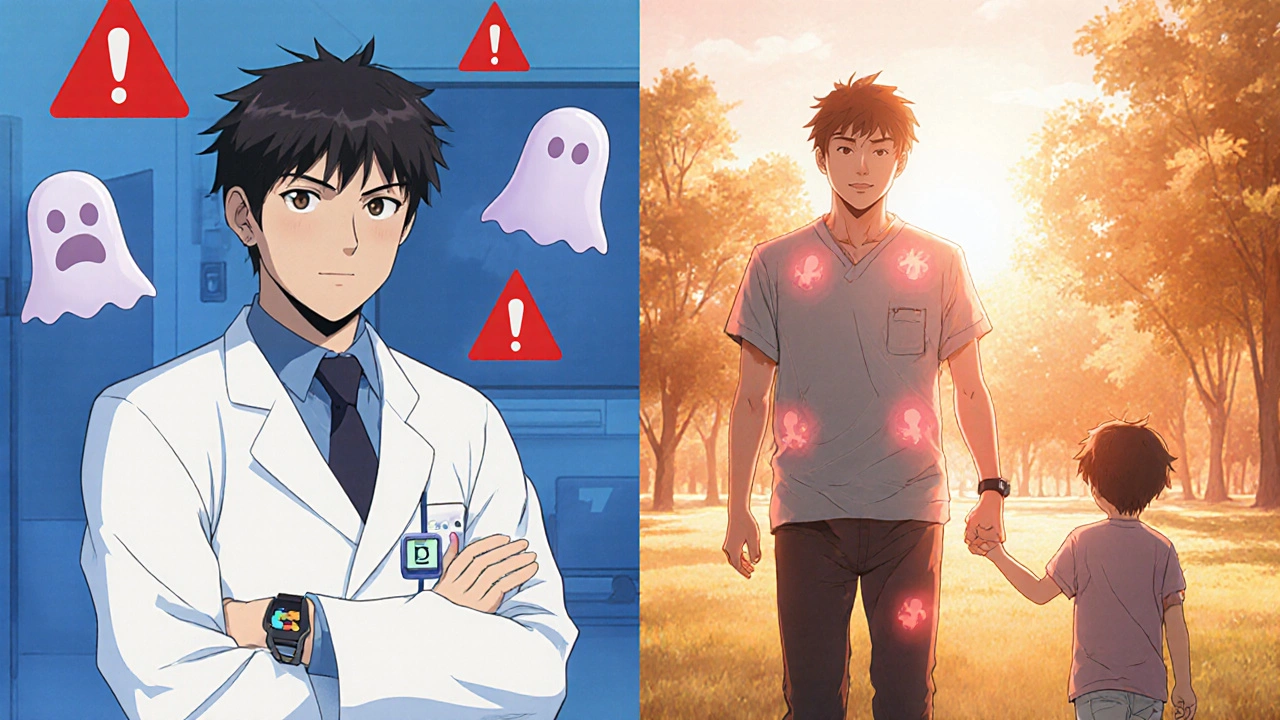
The System Is Broken-But Change Is Coming
Here’s the harsh reality: there are only 3,200 board-certified pain specialists in the entire U.S. That’s 0.3% of all doctors. In rural areas, you might drive 50 miles just to see one. Meanwhile, the demand is rising. By 2030, we’ll be short by 7,500 specialists.
But things are shifting. Medicare now covers 80% of the cost for digital pain programs like Curable and Reflect-apps that use CBT, mindfulness, and education. Kaiser Permanente cut opioid prescriptions by 47% in one year by expanding access to physical therapy and behavioral health.
The NIH is spending $1.8 billion on non-addictive pain research. New diagnostic tools are being developed to spot pain patterns in the brain and nerves. Precision medicine-tailoring treatment based on your genes, lifestyle, and pain type-is coming by 2027.
What You Can Do Today
If you’ve been in pain for over three months:
- Stop waiting for a miracle pill. Ask for a referral to a pain specialist or a multidisciplinary pain program.
- Try a free CBT app or online course. Many are covered by insurance now.
- Track your pain: where it is, how bad it is (1-10), what makes it better or worse. This helps doctors see patterns.
- Move gently every day. Even 10 minutes of walking or stretching helps retrain your nervous system.
- Find your people. Online communities like r/ChronicPain aren’t just support-they’re proof you’re not alone.
Chronic pain doesn’t have to be your whole life. But it won’t disappear by ignoring it. Or hoping it gets better on its own. It takes a plan. And you deserve one.
Is chronic pain just ‘bad pain’ that lasts longer?
No. Chronic pain isn’t just acute pain that didn’t heal. It’s a disease of the nervous system where pain signals keep firing even without tissue damage. The body’s alarm system gets stuck. That’s why treatments for broken bones won’t work here. It needs a different approach.
Can chronic pain ever go away completely?
For some, yes-but for most, the goal is management, not cure. With the right mix of therapy, movement, and mindset, many people reduce their pain by 50% or more and regain daily function. That’s a win. You don’t need to be pain-free to live fully.
Why don’t doctors always recommend physical therapy first?
Many doctors aren’t trained in pain management. They’re taught to treat symptoms with pills. Also, insurance often doesn’t cover enough physical therapy sessions. But guidelines from the American Pain Society and CDC now say non-drug treatments should be tried before opioids. You may need to ask for it.
Are pain medications ever appropriate for chronic pain?
Yes-but only as part of a broader plan. Gabapentin or low-dose antidepressants can help nerve pain. NSAIDs might help flare-ups. But they’re not the foundation. Relying on them alone leads to side effects, tolerance, and disappointment. Think of them as temporary supports, not solutions.
How do I find a good pain specialist?
Look for someone board-certified in pain medicine (American Board of Pain Medicine). Ask if they use a multidisciplinary approach-do they work with physical therapists, psychologists, and occupational therapists? Avoid anyone who pushes opioids as the main treatment. Check if your insurance covers pain clinics or programs like those at Mayo Clinic or Kaiser.
What’s the best app for chronic pain?
Curable and Reflect are two of the most evidence-based apps. Both use CBT, neuroscience education, and mindfulness techniques backed by clinical studies. Curable has over 250,000 users and a 4.7/5 rating. They’re not magic, but they’re proven tools that fit into your daily life-and many are now covered by Medicare and private insurers.

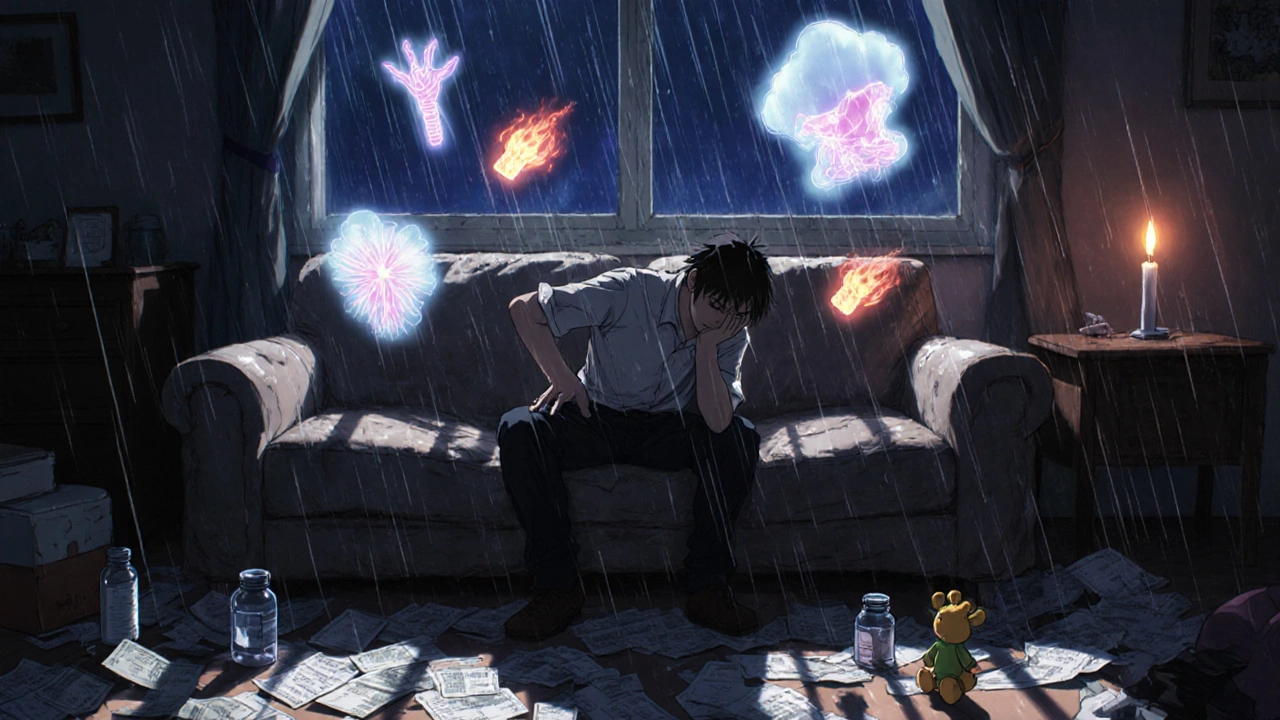

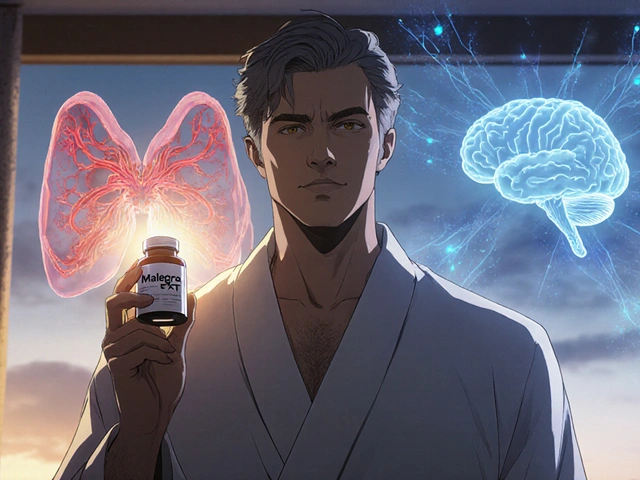
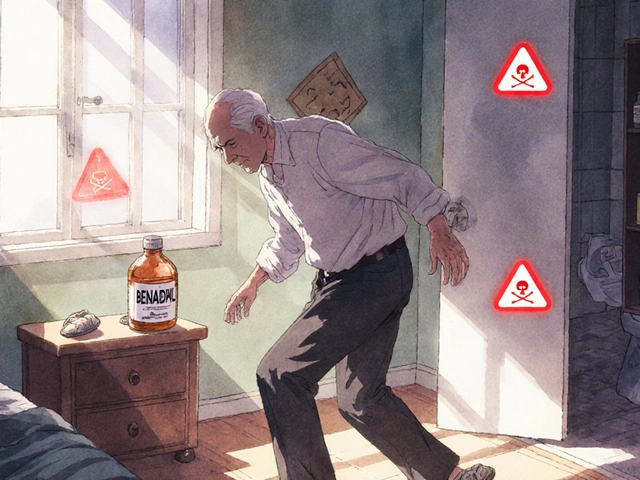

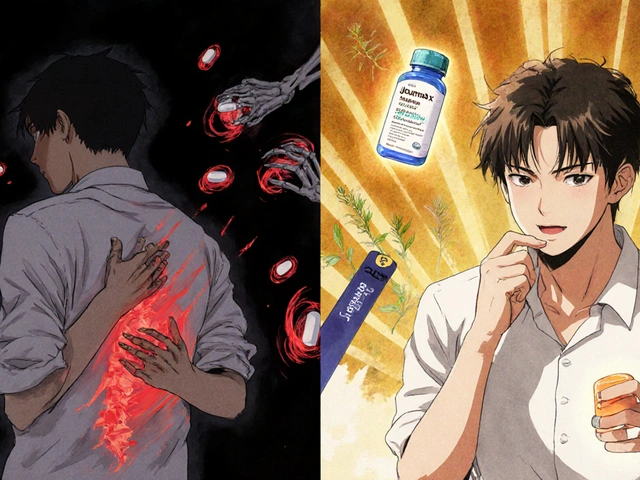

kora ortiz
November 17, 2025 AT 14:44Chronic pain isn't a flaw it's a system failure and you're not broken for needing help
Kathryn Ware
November 18, 2025 AT 03:21I spent 5 years being told it was stress or anxiety or just in my head until I found a pain clinic that actually listened. CBT didn't magically fix me but it taught me how to stop fighting my body and start working with it. I used to cry every night from pain and now I can walk my dog without needing to lie down for an hour after. It's not a cure but it's a life. Also I use Curable every morning like coffee ☕️💪🏼
Jeremy Hernandez
November 18, 2025 AT 12:22They want you to believe this is a medical crisis but really it's Big Pharma pushing pills and insurance companies refusing to pay for real treatment. You think they care if you get better? No they want you on opioids forever so you keep paying. They even made up new terms like nociplastic just to sell more tests. Wake up
Tarryne Rolle
November 20, 2025 AT 04:28Is chronic pain really a disease or just the inevitable consequence of living in a society that commodifies the body and pathologizes suffering? We treat pain like a bug to be fixed instead of a signal that something deeper is wrong with how we live. The system doesn't want you healed it wants you managed
Kyle Swatt
November 22, 2025 AT 00:35I used to think pain was just physical until I started noticing how it stole my joy quietly like a thief in the night. It didn't just hurt my back it killed my sense of self. The real magic isn't in the meds or the apps it's in finding people who get it. Not pity not advice just presence. That's what saved me
Deb McLachlin
November 23, 2025 AT 16:43While the biopsychosocial model is indeed supported by robust clinical evidence, I would urge caution regarding the generalization of success rates cited. Individual variability in pain perception and treatment response remains substantial, and longitudinal outcomes are not uniformly documented across all programs referenced. Furthermore, accessibility disparities based on socioeconomic status and geographic location significantly limit the practical applicability of these interventions for a large proportion of the population.
saurabh lamba
November 24, 2025 AT 14:11USA always make everything complicated. In India we just take painkiller and keep working. Why need all these apps and therapy? Just toughen up bro
Kiran Mandavkar
November 25, 2025 AT 21:57How dare you suggest that chronic pain can be managed with mere CBT and stretching? This is a Western illusion of control. You cannot reduce the metaphysical burden of suffering to behavioral modules and insurance-covered apps. The very premise is arrogant. Pain is the universe whispering truths you refuse to hear
Eric Healy
November 27, 2025 AT 04:38They say opioids are dangerous but they dont say why the hell doctors keep pushing them first. I got hooked on oxycodone after a back injury and now I can't get off it. No one gave me another option. This whole system is rigged
Shannon Hale
November 28, 2025 AT 13:13I used to be a yoga instructor until the pain got so bad I couldn't even tie my own shoes. I spent $20k on this 4-week program at Mayo and I swear to god I got my life back. I can hold my niece now. I can laugh without wincing. This isn't hype it's survival. If you're still on pills and waiting for a miracle you're wasting time
satya pradeep
November 28, 2025 AT 21:11My cousin in Delhi has neuropathic pain from diabetes and he does breathing exercises and walks 30 min daily. No meds. No apps. Just discipline. Maybe we overmedicalize pain too much?
Prem Hungry
November 29, 2025 AT 04:16Dear friend, your courage to endure is already a triumph. Please do not underestimate the power of gentle movement. Even one minute of stretching is a rebellion against the silence that pain tries to impose. You are not alone. The world needs your presence. With deepest respect and solidarity
Leslie Douglas-Churchwell
November 29, 2025 AT 21:47Of course they want you to believe in CBT and apps. It's cheaper than real care. The real solution? A global reset of the medical-industrial complex. These programs are just placebo bandaids wrapped in neuroscience jargon. They don't fix the root: capitalism turning bodies into productivity metrics. You're not broken. The system is.
shubham seth
December 1, 2025 AT 00:09Let me break this down for you. The 82% sleep disruption stat? Correlation isn't causation. You're not sleeping because you're anxious about being judged for your pain. The real villain isn't the nervous system it's the social stigma. You're not in pain you're in shame
Gordon Mcdonough
December 2, 2025 AT 20:24THIS IS WHY WE NEED BORDER WALLS! PEOPLE LIKE YOU COME HERE AND THEN CRY ABOUT PAIN AND WANT FREE APPS AND THERAPY! IN MY COUNTRY WE JUST WORK AND PUSH THROUGH! YOU'RE WEAK AND YOU KNOW IT!